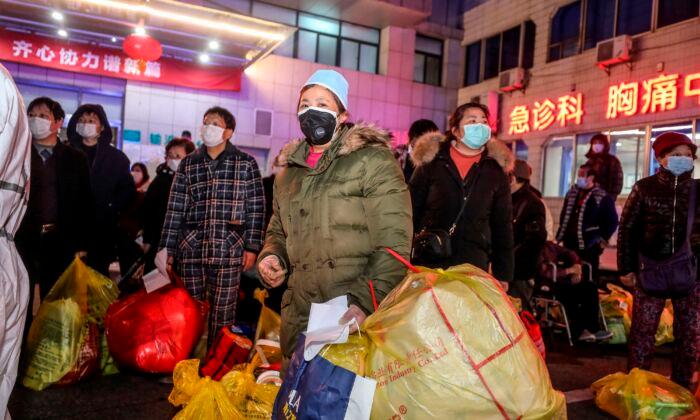Makeshift hospitals in the central Chinese city of Wuhan have stopped discharging patients, after one suddenly died of the disease caused by the novel coronavirus, COVID-19, upon being released.
Meanwhile, hospitals across China have found that some people who recovered from the virus later relapse.
Sudden Death
The case of Li Liang raised the alarm.He died on March 2 at the age of 36. He lived in Qiaokou district of Wuhan.
Li received a CT scan on Feb. 4, in which his doctor found that both his lungs had inflammation and suspected that he was infected with the novel coronavirus.
After being diagnosed with the virus by a diagnostic kit, Li was admitted to the Hanyang makeshift hospital on Feb. 12. By Feb. 23, another CT scan showed that the majority of his lungs were damaged by the virus.
After his release, Li was sent to a quarantine center at the Vienna Hotel located at Hanxi San Road in Qiaokou district. As per new regulations by Wuhan authorities, all discharged patients are required to be placed at quarantine centers for medical observation and isolation for 14 days. If they are deemed to have fully recovered at the end of 14 days, they may be released home.
Mei said Li told her via phone calls that he started to feel thirsty and stomach flatulence beginning on Feb. 28.
On the morning of March 2, Li said he was very weak and couldn’t stand. He claimed that he was not hungry, although he didn’t eat the whole day. Mei was worried about Li, but she wasn’t allowed to enter the quarantine center.
After roughly 10 a.m., Mei called Li again, and had the chance to speak with a doctor who worked at the quarantine center. The doctor told Mei that it’s possible Li was feeling too stressed.
Hospitals’ Actions
On March 5, several Chinese media outlets, including Jiemian, reported that makeshift hospitals in Wuhan have stopped releasing patients.Jiemian quoted a person in charge of the Guobo makeshift hospital in Hanyang district, who said it was a decision made by the newly setup command center in Wuhan to combat the outbreak.
The Guobo manager said that medical staff will release patients only if they meet the following four criteria: their body temperatures have been normal for seven days; two diagnostic kits show negative results; CT scans show the lungs’ condition are improved; and the blood oxygen saturation levels must be 95 percent or higher.
The report cited an urgent notice issued by the Jiang’an makeshift hospital on March 4: “Recently, there are many relapsed patients who were later treated at hospitals again. To reduce relapses and reach the goal of ‘Zero Relapse,’ our hospital has decided to monitor the virus antibody Ig-M and Ig-G for all patients who will be released.”
The hospital will only release patients with negative Ig-M and Ig-G levels, the report quoted a person in charge of the Jiang’an hospital as saying.





